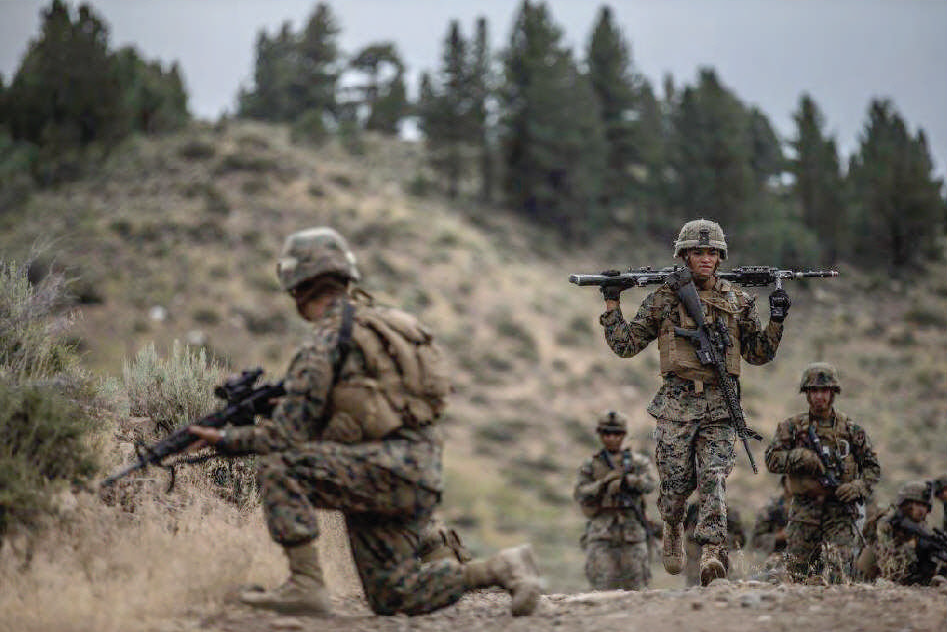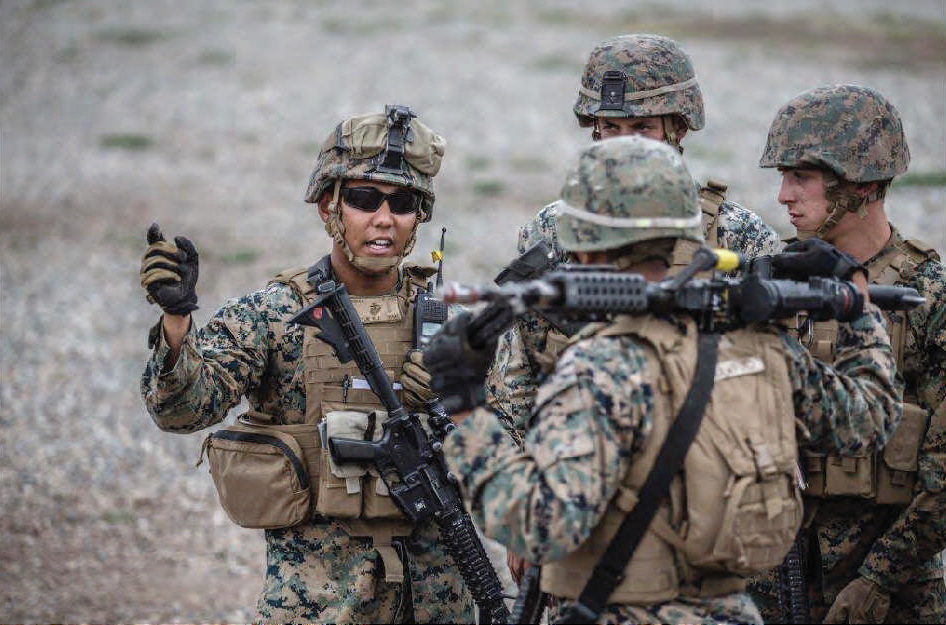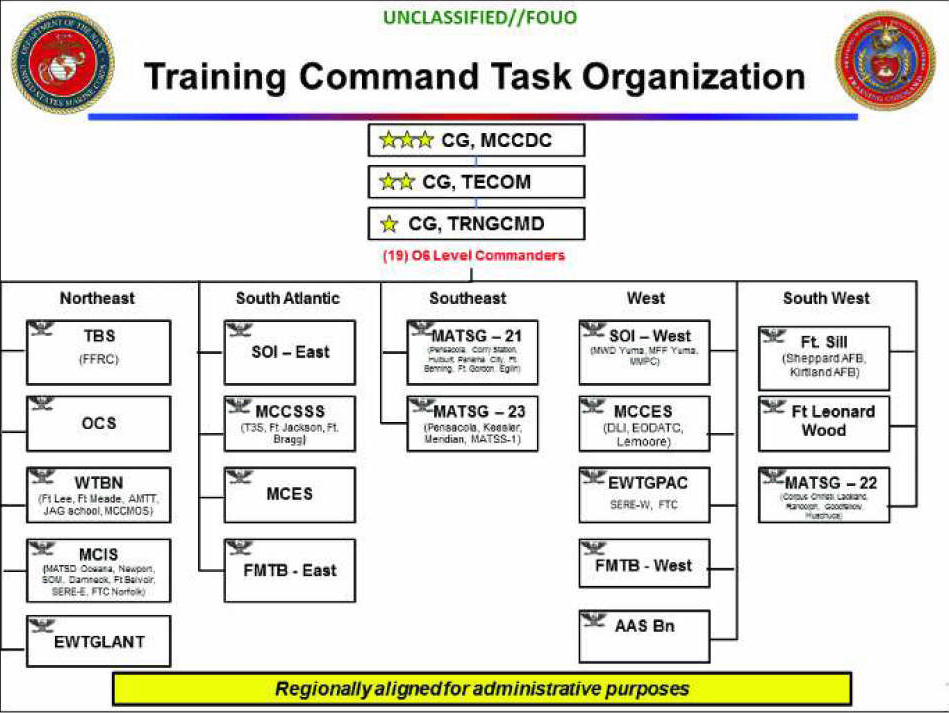by Maj Breck L Perry
There are far too many units in the Marine Corps that fail to prioritize and formalize PME. Focus of effort goes to training and developing techniques and procedures in correlation with training and readiness mission-essential tasks. Perpetual turnover, fluctuating training exercise and employment plans, and surging operational tempo typically consume commands, and PME becomes a “nice to have” instead or a priority. This is counter to our maneuver warfare doctrine and a disservice to the Marines and Sailors İn our charge. Fortunately, there is a movement underway to reinvigorate maneuver warfare in our Corps’ culture. In his FRAGO 01!2016 Advance to Contact, the Commandant of the Marine Corps decried: we will re-emphasize that Marines and Sailors of all ranks have the responsibility to educate themselves. Commanders will enable educational opportunities and will conduct unit level PME for all ranks.1
The Commandant’s vision implies the need for commanders at all levels to design and institute a formalized PME plan within their respective units. The purpose of this article is to assist in that endeavor and provide a model that attempts to reinvigorate maneuver warfare at the battalion level. This model is undergirded by our warfighting doctrine and organized along five lines of effort (LOEs): history, will, leadership, adversary, and advanced warfighting, with the end state being to create the best thinkers, decision makers, trainers, planners, and teachers in the Marine Corps. (See Figure 1.)
Approach
Training and education are mutually supporting terms, but they are not synonymous. Training is about skill, focusing on task performance and effectiveness, techniques and procedures, and the building of effective habits of thought and action. Education is about the will, concentrating primarily on thinking and decision making, aimed at cultivating military judgment, implicit communication, and trust. Doctrine provides the common language and philosophy, while education provides the understanding of the doctrine within fighting organizations. The amalgamation of intellect, audacity, and tactical proficiency has produced victory in battle for over 4,000 years. It is a moral imperative that officers and SNCOs possess an insatiable desire to “teach and learn, coach and be coached, and possess and cultivate an innate curiosity and appetite for understanding.”
MCDP 1, Warfighting, should be the first resource thoroughly studied prior to developing a PME program. MCDP 1-3, Tactics, should be the second. MCDP 1-3, Chapter 8 vividly describes the systemic, mutually supporting relationships between doctrine, education, training, and operational employment.
Doctrine establishes the philosophy and practical framework for how we fight. Education develops the understanding, creativity, military judgment, and the background essential for effective battlefield leadership. Training follows doctrine and develops the tactical and technical proficiency that underlies all successful military action. Individual and group exercises serve to integrate training and education, producing a whole that is greater than the sum of its parts. The lessons learned from training and operational experience then modify doctrine.2 (See Figure 2.)
Commanders intent. The cornerstone to PME plan development is the commander’s intent. It is also recommended to go two levels up when conducting an initial analysis on crafting the model. The commander’s intent should be interwoven throughout the model, and the commander’s end state articulated up front. Today’s generation of officers and SNCOs should understand the purpose for the PME program and what İs expected of them.
Commander’s guidance. Dialogue pertaining to LOEs needs to occur between the PME coordinator and the commander to achieve the objectives or end state of the unit’s program. Recommended LOEs are described below:
* LOE 1-History. Focused on the lessons learned from over 4,000 years of recorded military history, in pursuit of developing the 4,000-year-old mind. As Gen Alfred M. Gray told us: “If you want a new idea, read an old book.”3 Central points: history and legacy of the battalion and lessons learned in previous conflicts.
* LOE 2-Will. Focused on the development of decision makers who can thrive in chaos, uncertainty, constant change, and friction. Central points: nurturing the maneuver–warfare mindset and truly understanding the human dimension of war.
* LOE 3-Leadershİp. Leadership is the foundation of any command. Focused on developing the moral, mental, and physical capabilities of the battalion’s leaders. Central points: building of trust and the warrior ethos.
* LOE 4-Adversary. Oriented on the ever-pervasİve and mutating enemy threats that seek to eradicate the American way of life, from radical, terrorist groups to near-peer competitors. Studying the current operating environment and potential scenarios the battalion may fight İs essential. Central points: transnational terrorist groups and near-peer state actors.
* LOE 5-Advanced Warfighting: This LOE İs loosely coupled from the PME program. It İs a weekly seminar that is strictly voluntary and managed by the operations officer. The purpose of this LOE is to have discussions on doctrinal warfighting articles and publications in order to discuss creative and adaptive ways to fight and win. It corresponds directly to the tactical tenets in MCDP 1-3, is focused on the tactical level of war, and aims to stimulate outside-the-box thinking. Central points: offense, defense, shoot/move/ communicate-related topics. In addition, outputs from this LOE drive training and experimentation for future field exercises and facilitate SOP refinement.
Methods. The PME program utilizes multiple educational techniques employed across the breadth of the program. These techniques include but are not limited to guided discussions, staff rides, guest speakers, decision-forcing case studies, videos, and critiques. Most PMEs will require a “read-ahead” for preceding preparation. PMEs are recorded and archived for a podcast that Marines can access and reference at their leisure.
Writing requirements. There should be a monthly writing requirement for a Marine Corps Gazette article submission for the battalion, apportioned by company. For example: Fox CompanyNovember, Goli Company-December, etc. The topic İs of the company commander’s choosing. (See Figure 3 for an example.)
Assessment and redesign. The PME schedule is published semiannually with a quarterly assessment conducted. The assessment consists of the PME coordinator and CO having a dialogue on ways to improve the program, projecting the next six months, and canvassing the commanders and staff for feedback on the rough-cut schedule provided by the PME coordinator. This assessment is vital to ensure the PME program remains relevant and correlates with the operational requirements for the battalion. For example, a battalion compositing as a battalion landing team might want to focus effort on the Leadership LOE İn order to build cohesion and esprit de corps and inculcate commander’s intent to the SNCOs and officers newly integrated into the team. The next month’s PME plan may want to focus effort on the history of amphibious operations in the History LOE, then transition into the Adversary LOE to discuss recent enemy tactics against coalition forces İn Iraq and Syria. The top-down guidance is given. Bottom-up refinement İs provided. The result intended is buy-in and stewardship of the program.
Roles and Responsibilities
PME coordinator. The officer and SNCO PME coordinator should be the battalion executive officer. As the second in command of the battalion, the XO is responsible for the leadership development and mentorship of the staff and officers. The XO has the pulse of the unit, a close relationship with the sergeant major for senior enlisted counsel, and a high-fidelity grasp of the commander’s intent. The XO should have adept teaching and coaching skills and a drive to instill those traits İn others. The XO is responsible for a PME plan focused on four of the five LOEs: History, Leadership, Will, and Adversary.
Assistant PME coordinator. This is a collateral duty usually assigned to the assistant intelligence officer (S-2 Alpha). This officer İs ideally one of the best educated young officers in the battalion and İs skilled in organizing, coordinating, and communicating. Primary responsibilities for this billet are to coordinate logistical support for offsite PME, record each PME, supervise the coordination of guest speakers and distinguished guests, and archive the PME for future use.
Advanced warfighting coordinator. The Advanced Warfighting LOE is the province of the operations officer. The operations officer fights the battalion and always seeks to gain advantage over the enemy to lead to their collapse and defeat. Associated with the battalion TEEP, the operations officer provides weekly articles, topics, and coordinating instructions centered around the CO’s guidance. The operations officer collaborates with the CO on teaching seminars and preparing the appropriate resources: maps/interactive tactical decision games, media, etc.
Derivatives: Implicit Communication and Military Judgment
There are many obvious benefits to a formalized and deliberate PME plan. Critical thinking, teaching, and reasoning skills become sharpened and refined. Creativity İs enhanced. Verbal and written communication skills mature. However, the two most essential abilities developed through a consistent PME program are implicit communication skills as they relate to a command and military judgment as it relates to the individual decision maker. MCDP 1-3 points out that Lord Admiral Horatio Nelson didn’t lead the British fleet through semaphore. He invested time İn developing understanding, sharing experience, coaching, and instilling his commander’s intent amongst his captains.
Implicit communications must be developed over time. This requires actions that strengthen unit cohesion and mutual trust. This requires keeping people together in their units and stable in their assignments. It implies keeping good teams together. It means developing a band of brothers in our units, as Admiral Horatio Nelson did. He spent many evenings with his captains gathered in the cabin of his flagship talking over tactics, ways they might fight different engagements, how they would defeat this or that opponent. From those evenings came a shared way of thinking so strong that, at Trafalgar, Nelson needed only to signal ‘England expects every man will do his duty,’ and ‘Close action.’ Sometimes words have meaning beyond the normally obvious meaning because of shared experiences and understanding.^
Military judgment is the other derivative skill of PME. It İs the nucleus of adept decision makers and tacticians and the catalyst of decisive action.
Military judgment is a developed skill that is honed by the wisdom gained through experience. Combined with situational awareness, military judgment allows [Marines] to identify emerging patterns, discern critical vulnerabilities, and concentrate combat power … Marine leaders must be able to cut to the heart of a situation by identifying its important elements, developing a sound plan, and making clear decisions.^
Most young officers have limited combat experience. Formalized unit PME provides a vehicle by which Marines can harvest wisdom from the vicarious experience of historic military leaders, educate themselves on an adaptive enemy, or garner lessons learned from recent tactical experiments with emerging technology.
Conclusion
All commanders should consider the professional development of their subordinates a principal responsibility of command. Commanders should foster a personal teacher-student relationship with their subordinates. Commanders are expected to conduct a continuing professional education program for their subordinates that includes developing militaryjudgment and decisionmaking \siĄ and teaches general professional subjects and specific technical subjects pertinent to occupational specialties. Useful tools for general professional development include supervised reading programs, map exercises, war games, battle studies, and terrain studies. Commanders should see the development of their subordinates as a direct reflection on themselves.^
MCDP 1 gives resounding and unblemished guidance on PME expectations for all commands İn the Corps. This article focused solely on an officer and SNCO PME plan with the intention of assisting and supplementing units with a purpose-driven PME model to employ. This model is far from perfect, but it is modular, sustainable, and an enduring priority of the command.
Notes
1. Headquarters Marine Corps, FRAGO 01/2016 Advance to Contact, (Washington, DC: 19 January 2016).
2. Headquarters Marine Corps, MCDP 1-3, Tactics, (Washington, DC: 30 July 1997).
3. Paul Otte, Grayisms and Other Thoughts on Leadership From General Al Gray, USMC (Retired), 29 th Commandant of the Marine Corps, (Arlington, VA: Potomac Institute Press, 2015).
4. MCDP 1-3, Tactics.
5. Ibid.
6. Headquarters Marine Corps, MCDP 1, Warfighting, (Washington, DC: 20 June 1997).











